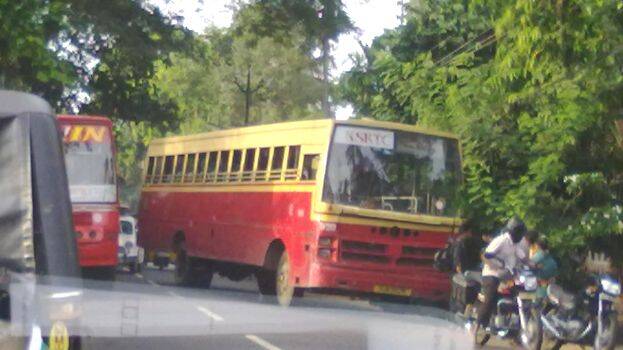

A number of study reports have revealed that the main reason for most road accidents during wee hours happens because those behind the wheels dose off.
When sleep tries to conquer your eyes, it is better that you park the car by the side and take rest or sleep off for some time.
But most people don’t heed to this advice. Those who are hurry to reach the destination at least one hour in advance usually speed off. Those who work in the public sector usually don’t get time to take rest even if they wish for it. Since they are duty-bound to reach a destination at the right time, they give ‘leave’ for rest and sleep and drive the bus for continuous hours due to work pressure.
Despite night-time accidents, this continues as a rule.
We can understand this if we look into the accident at Palarivattom in Ernakulam in which one person died and 25 others sustained injuries after a KSRTC bus rammed into a tree on Monday.
The incident occurred around 4:30 am.
The super deluxe bus from Thiruvananthapuram to Kozhikode rammed a tree on the wayside of the 4-lane road. Arun Sukumaran, the bus driver died on the spot. The front end of the bus was fully damaged. Initial reports said the driver may have fallen asleep which resulted in the accident.
The bus climbed up the median and hit a tree before it came to halt. Since the bus had the capacity to bear the brunt of the crash, no further casualty was there.
The driver of this Super Deluxe bus that was heading towards Kozhikode from Thiruvananthapuram should have driven the bus till the destination if the accident had not happened.
The KSRTC operators are not unaware of the dangers of driving a bus alone for more than 400 km, that too in the night.
No one sees anything unusual about this since this has been a practice for a very long time.
But the authorities do not remember that they are playing with the life of people who are paying them for the travel.
When assigning long-distance routes to employees, their physical fitness endurance level should be checked. It is important to take into account the fatigue and tiredness that they may experience when driving continuously for more than eight hours.
In such long distances, there should be arrangements to change drivers.
The crew change system has been under discussion for a long time. This system, which can be implemented at no additional expense is safe and apt to be implemented at least in night services.
It is funny and ridiculous to see KSRTC implementing crew change system within hours after the Palarivattom accident.
The moot question is why the KSRTC should have waited for an accident to happen in order to implement this system which is both beneficial to bus staff and travellers.
The driver who died in the accident has wife and two kids. Now, is KSRTC not responsible for the plight of his family?
Road accidents is not deliberate. But KSRTC could have taken necessary precautions to reduce the accidents to the maximum.
However, KSRTC’s record in this matter is not reputable. Even they fail to recompense the victims on time.
Accidents involving KSRTC’s premium services is not an unusual thing.
Accidents caused by hi-tech buses worth crores of rupees also results in big financial losses. In earlier times, experienced drivers were deployed for long-distances services.
They showed extreme responsibility and dedication to the duty; for them passengers’ safety was very important.
It is true that all these have changed with changing times.
But the staff should always bear in my mind that those set off for bus journey are doing so after trusting them completely.
The bus crew should always remember that the passengers’ lives are in their hands. The responsibly of the management is also big in this matter.